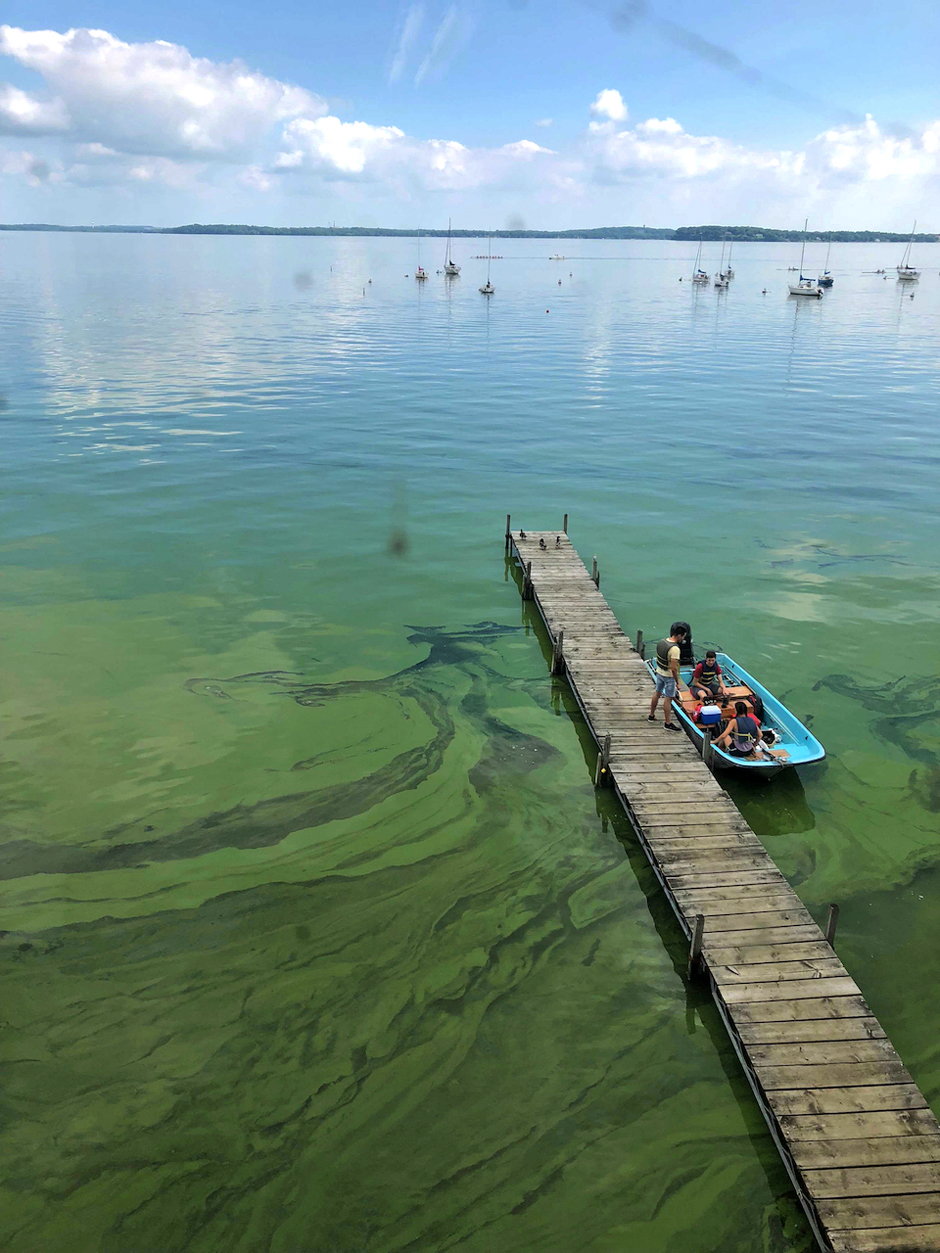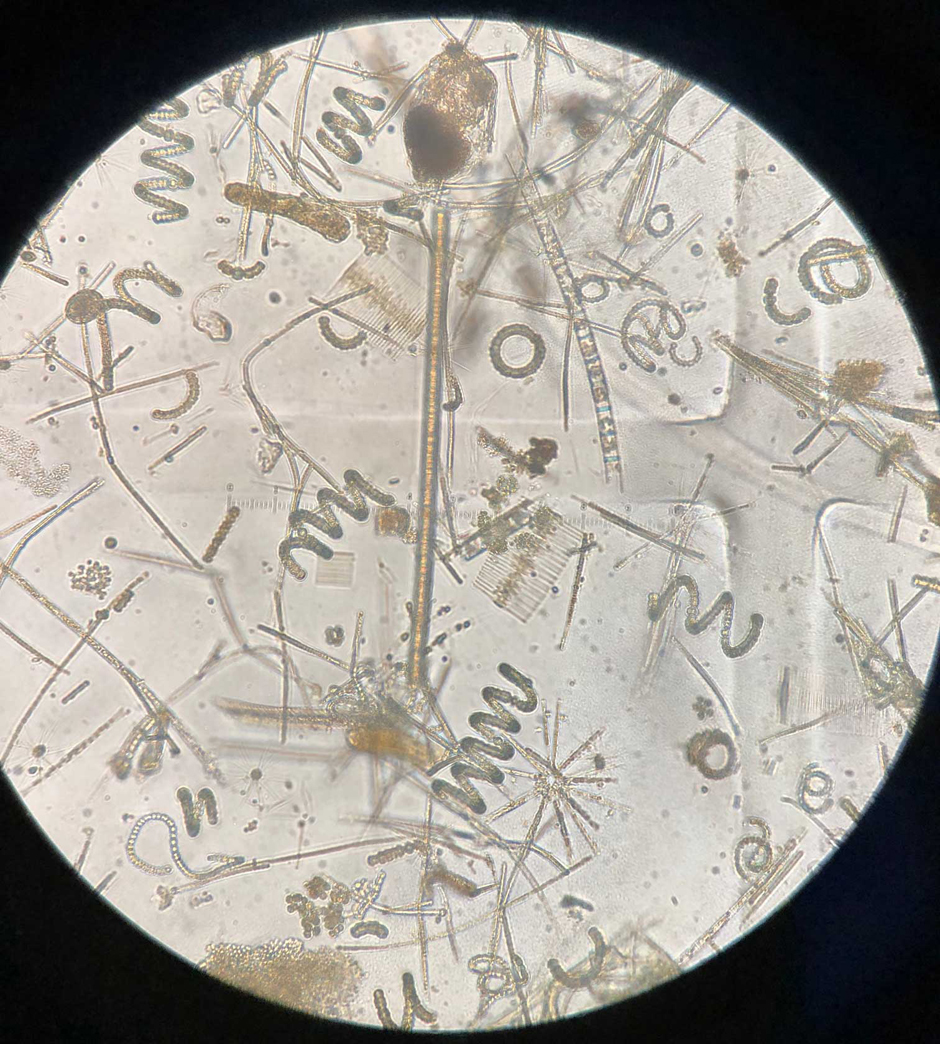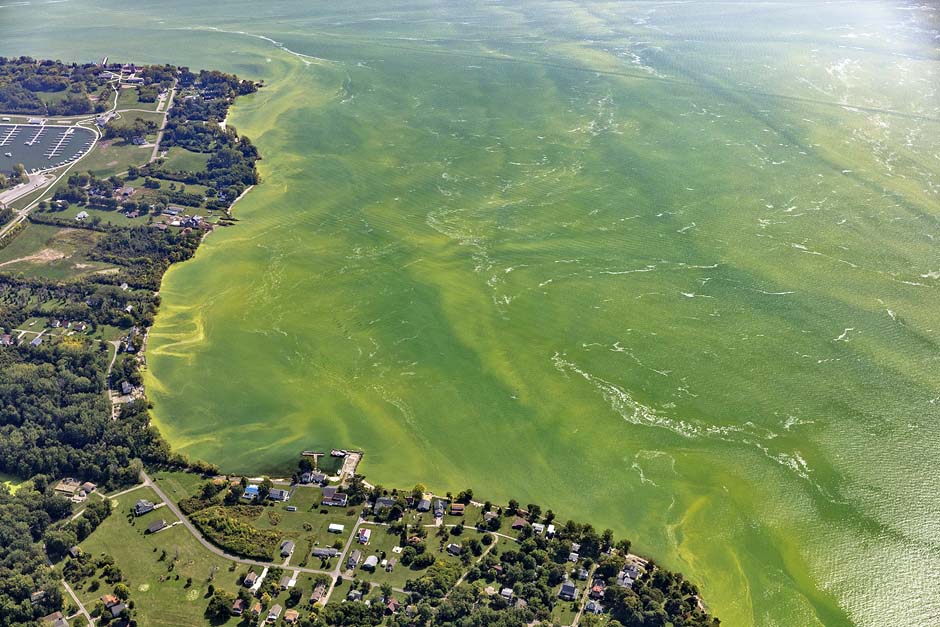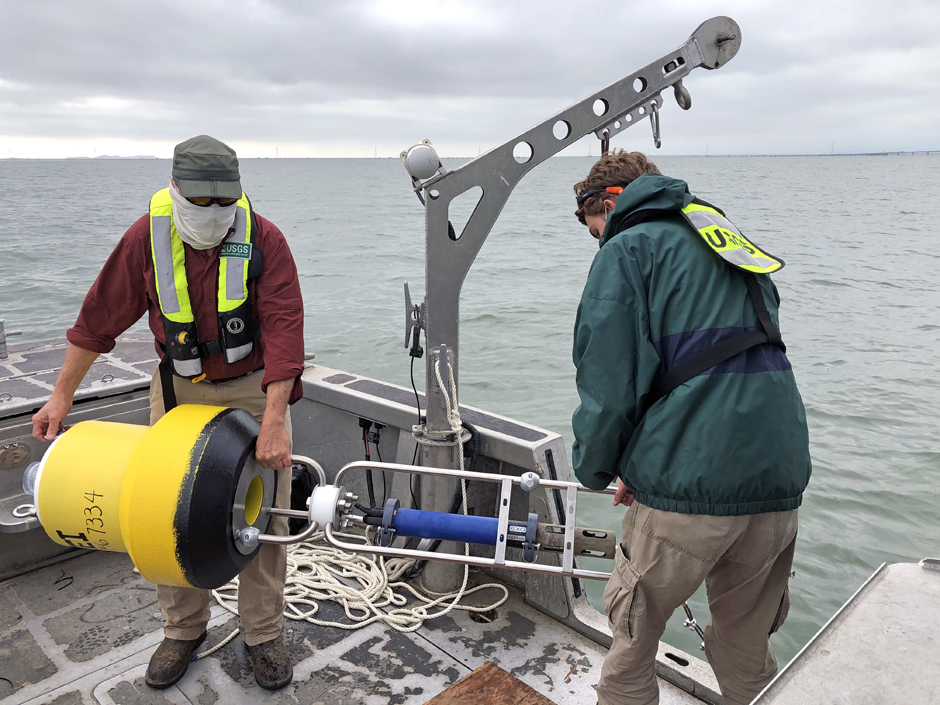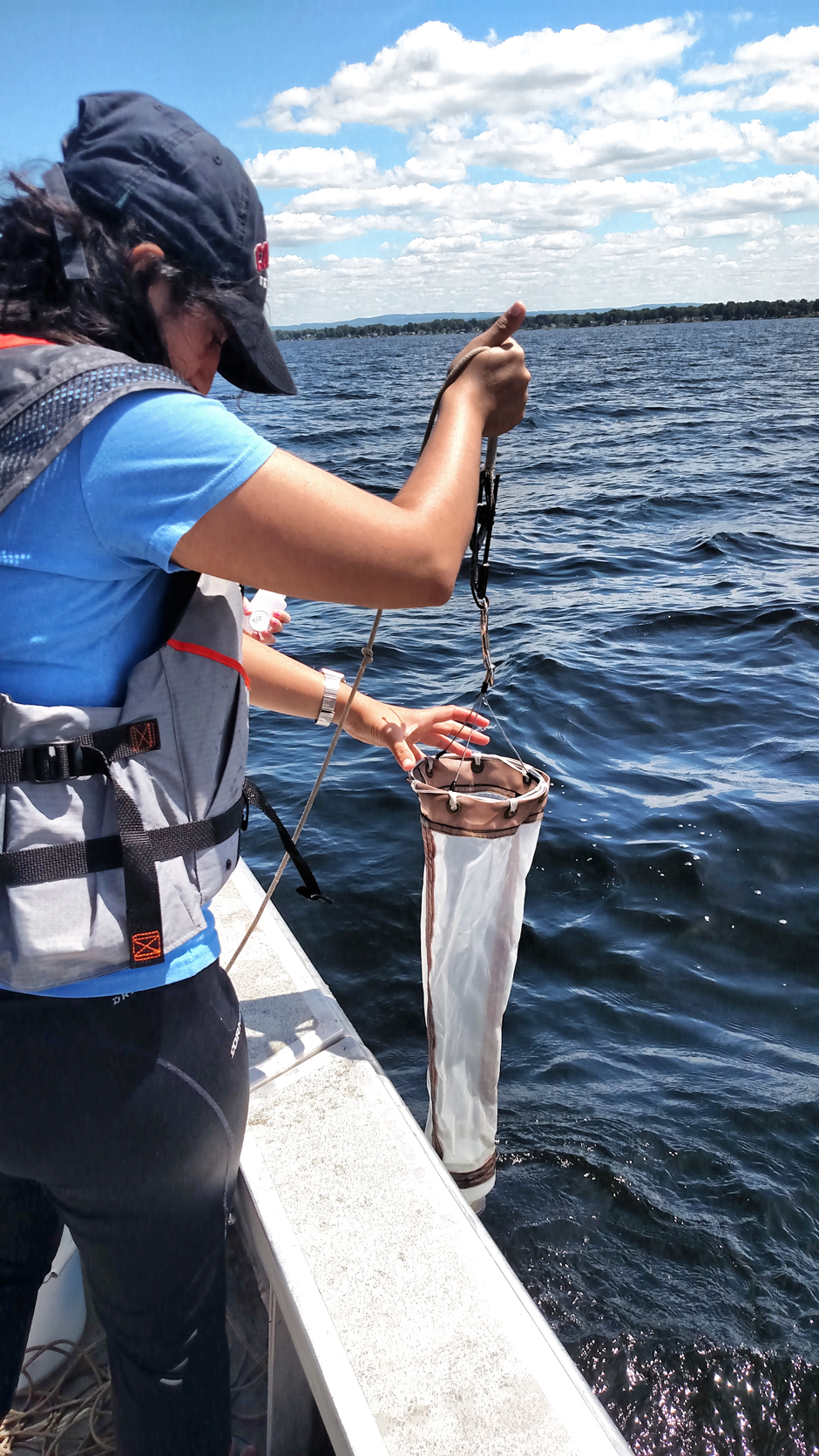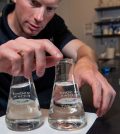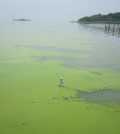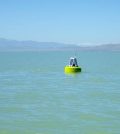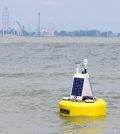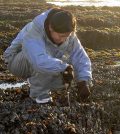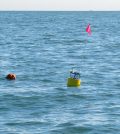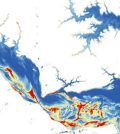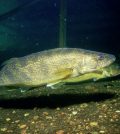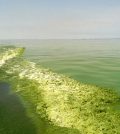Posts for tag "algae"
How Green Was My Cyanobacteria: Carbon, Nitrogen, and Phosphorus Cycling in Lakes
The influence of bacteria on carbon, nitrogen, and phosphorus cycling processes in lakes and their influence on lake health is explored.
- Posted October 29, 2021
Diatoms Dominate Muskegon Lake In A Cold And Rainy Year
An unusually rainy and cold year changed the phytoplankton makeup of one Michigan lake. Climate change makes similar changes more likely in the future.
- Posted October 15, 2021
Wildfire smoke alters a lake’s ecology from the top to the bottom of the food chain
Primary production shifted and trout fled for deeper water during intense wildfire smoke periods, even far from a fire.
- Posted July 22, 2021
New Tech Aims to Make Algal Bloom Monitoring Faster and More Dynamic
Technology on the horizon will allow researchers to track harmful algal blooms and measure their toxicity in real time.
- Posted July 7, 2021
Charles River Algal Blooms Stop Swimming and Launch a Floating Wetland
After decades of abuse, new research and a floating wetland point toward a healthier future for the Charles River.
- Posted April 7, 2021
Lake Superior Algal Blooms Surprise, Highlight Need for More Monitoring
Algal blooms showed up unexpectedly in Lake Superior. Researchers pieced together their cause and are on the lookout for future blooms.
- Posted October 21, 2020
San Francisco Bay’s Nutrient Phenomena
Two data buoys recently deployed in the shoals of San Francisco Bay could be filling the important data gap on the local impacts of nutrient loading.
- Posted September 30, 2020
Dissecting the Algae Blooms of Montana’s “Unique Gem” the Smith River
The Montana Department of Environmental Quality is studying why a native species of algae is covering one of the state’s most popular rivers.
- Posted April 29, 2020
Cornell University Biological Field Station at Shackelton Point: Monitoring New York’s Largest Interior Lake for Sixty Years
Shackelton Point data includes records on various lake aspects that go back 50 years or more, making lake trends emerge more clearly to researchers.
- Posted August 14, 2019
American Lakes are Getting Murkier
Recent research indicates that blue lakes are no longer the most common in America, as lakes turn murkier for a variety of reasons.
- Posted November 27, 2018
Water-Filter Pitchers Not Equally Effective at Removing Microcystins
Recent research proves that when it comes to removing microcystins from drinking water, all water-filter pitchers aren’t equally effective.
- Posted September 19, 2018
City Officials Fight Taste, Odor Issues in Drinking Water—and Win
Maryville, Missouri officials along with state officials have successfully dealt with an algal bloom affecting drinking water caused by a very warm winter.
- Posted March 8, 2018
Algae Bloom Spawns New Water Monitoring Program In Utah Lake
Enhanced water quality monitoring in Utah Lake shows three types of cyanobacteria algae blooms inhabiting the lake simultaneously.
- Posted September 22, 2017
Data Buoys Study Turbid Water Environments In Lake Erie Basin
Scientists from Bowling Green State University use data buoys to study the Sandusky Bay to learn more about Lake Erie Planktothrix blooms and water quality.
- Posted August 25, 2017
High Levels Of Microcystin In Some San Francisco Bay Shellfish
Some shellfish in San Francisco Bay contain levels of microcystin beyond those noted as safe for consumption, say University of California researchers.
- Posted November 8, 2016
ESPniagara Tracks Algal Toxins In Lake Erie, Protects Drinking Water
The National Oceanic and Atmospheric Administration has completed the first long-term deployment of ESPniagara, a robot measuring microcystin in real time.
- Posted October 20, 2016
York River Algae Imaged From Space
Researchers with the Virginia Institute of Marine Science advance understanding of York River algae by imaging with hyperspectral sensors.
- Posted September 29, 2016
Possible Costs For Fixing Lake Erie Algal Blooms
An agricultural economist lays out different options for fixing Lake Erie’s algal blooms, like a phosphorus tax or subsidy, along with associated costs.
- Posted September 1, 2016
Lake Erie Food Web: What Are Cyanobacteria Bloom Effects?
Investigators from Ohio State University’s Aquatic Ecology Laboratory evaluate effects of cyanobacteria blooms on the Lake Erie food web.
- Posted August 31, 2016
Modeling Lake Erie’s 40 Percent Phosphorus Reduction Target
A modeling effort led partly by the Nature Conservancy assesses what needs to be done to achieve a 40 percent reduction in Lake Erie phosphorus.
- Posted August 26, 2016


